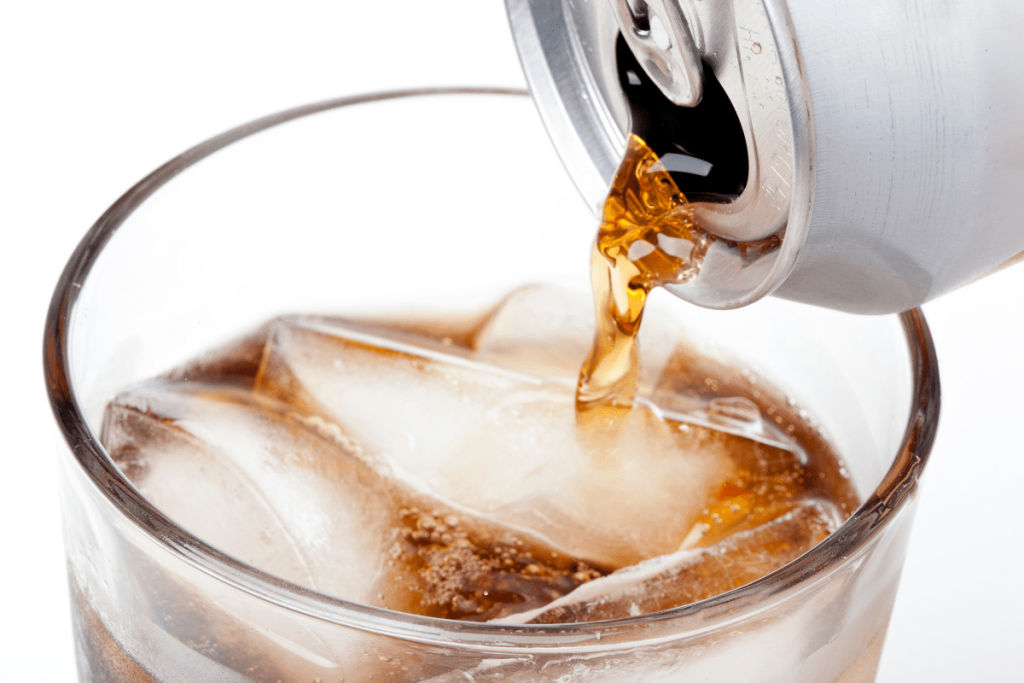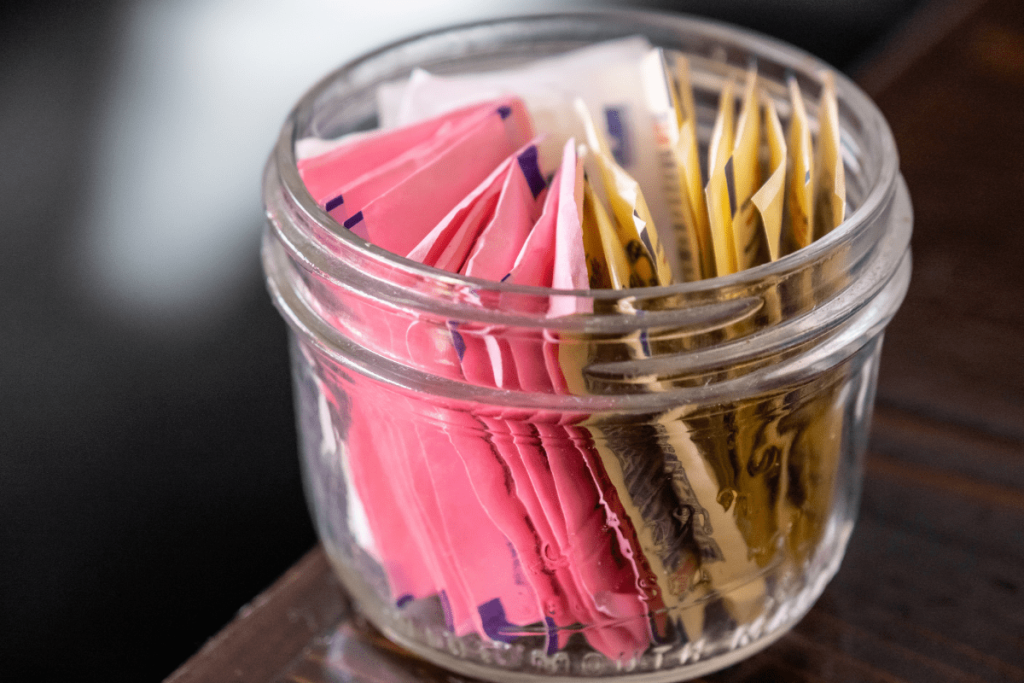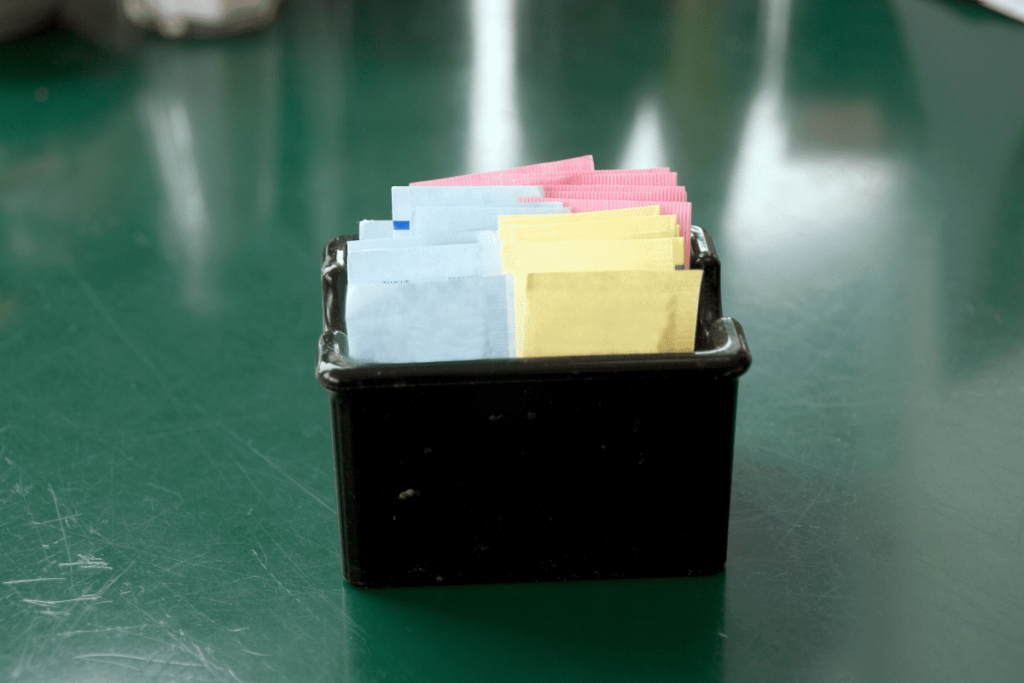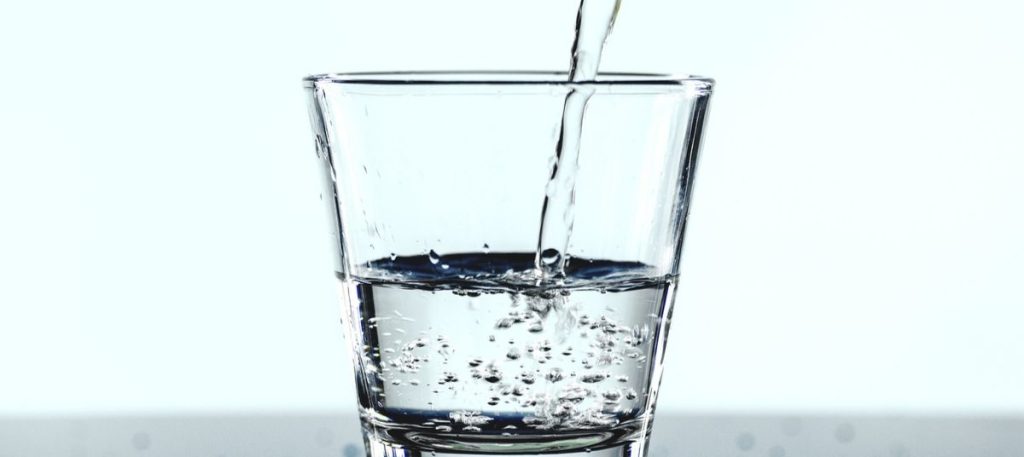SolVit D3 and COVID-19

SolVit D3 and COVID-19 Vitamin D, otherwise known as the sunshine vitamin, plays many important roles in the body, including promoting cardiovascular, skeletal, and immune health. Recently, vitamin D has been studied for its protective effect against COVID-19. However, there are several types of vitamin D to be aware of. Additionally, depending on your intended use for vitamin D, you may also want to take it with vitamin K. Here’s what you need to know about vitamin D, including its effect on COVID-19 and other health benefits. We’ll also talk about the synergistic effect of vitamins D and K and how much you should take. What does vitamin D do for you? Vitamin D is a fat-soluble vitamin, which means that it requires the presence of dietary fat to help absorb it. It’s found in very few foods, including beef liver, egg yolks, cheese, and some mushrooms. It’s also found in many fortified foods, such as almond milk, breakfast cereals, and orange juice. Vitamin D is unique because, unlike other vitamins, it operates as hormone in the body to send messages and control certain activities. Vitamin D can also be synthesized by the body when you are exposed to the sun. Here are some health benefits of vitamin D: It promotes healthy bones and aids in the absorption of calcium to increase bone density and decrease the risk of fractures and osteoporosis. It supports a healthy heart by reducing the risk of cardiovascular disease, improving blood flow, and improving blood pressure markers. It contains neuroprotective effects by reducing a protein buildup that has been shown to contribute to Alzheimer’s disease. It acts as an antioxidant to reduce oxidative damage, especially in nervous tissues that may lead to cognitive decline. It boosts immune health by supporting your body’s ability to protect against infections. It may lower the risk of autoimmune diseases, such as lupus, rheumatoid arthritis, and multiple sclerosis. Vitamin D has recently been evaluated for its protective effects against COVID-19. Research shows that vitamin D supports immune health by stimulating the production of immune cells, such as T cells and macrophages, that protect the body against pathogens. Several studies have shown that there is a link between proper vitamin D levels and a reduced risk of the common cold and upper respiratory tract infections. Specifically, vitamin D helps increase the expression of antimicrobial molecules in the lungs, which may help defend the area of the body most vulnerable to COVID-19. According to one study, vitamin D may help reduce the death rate caused by the coronavirus. This prompted experts to urge the government to adjust its advice and suggest that people strive for optimal levels of vitamin D. What is the difference between vitamins D2 and D3? Before you buy the first vitamin D supplement you see, it’s important to note that there are two types to be aware of: vitamin D2 (ergocalciferol) and vitamin D3 (cholecalciferol). One of the differences between the two is that D2 is sourced from plants (such as mushrooms, dietary supplements, and fortified foods) while D3 comes from animals (oily fish, liver, egg yolk, and butter). Vitamin D3 is the type of vitamin D that is formed in your skin when you are exposed to sun. Researc shows that vitamin D3 is better at improving your vitamin D levels than D2. Why is vitamin K2 added to many vitamin D supplements and who needs it? Vitamin K is another fat-soluble vitamin. It is often paired with vitamin D supplements because it helps minimize calcium accumulation in the blood vessels. If you are taking vitamin D for the purpose of enhancing skeletal health, bone density, or cardiovascular health, then it’s a good idea to look for a supplement that also contains vitamin K2. What form is D3 the best in? Taking a liquid form of vitamin D3 is better than in pills or capsules. This is why our vitamin D3 supplement comes in liquid form. As vitamin D3 is fat soluble, our SolVit D3 contains a dietary source of fat to assist with absorption making it more bioavailable and improving it’s efficacy. How much vitamin D do I need? You can get vitamin D from being in the sun. However, this is often not enough for most people, especially in the winter months. The recommended intake for vitamin D is 600 IU for men and women aged 1-70 years old. Adults over the age of 70 need 800 IU per day. Call my office at Solaris Whole Health to review personalized recommendations! Legal Disclaimer: These statements have not been evaluated by the FDA. These products and information are not intended to diagnose, treat, cure, or prevent any disease. The information provided or any information contained on or in any product label or packaging is for informational purposes only and is not intended as a substitute for advice from your physician or other healthcare professional. you should not use the information on this site for diagnosis or treatment of any health problem or for prescription of any medication or other treatment. You should consult with a healthcare professional before starting any diet, exercise or supplementation program, before taking any medications, or if you have or suspect you might have a health problem.
The Downside to Diet Sodas

The link between soda drinking and obesity is now well established. But what about the diet kind? Two years ago, a study at the University of Texas Health Science Center found that there was a 41% increase in the risk for being overweight for every single can of diet soda a person consumed daily. But how can something with no calories increase the risk for obesity and heart disease? There are several possible ways. One theory is that the sweet taste works in the brain to create a conditioned response, and the body responds as it usually does to normal sugar with insulin, the fat storing hormone. Those circuits in the brain are pretty primitive as far as your brain is concerned, sweet means sugar. It’s entirely possible that physiologically, you would respond to aspartame in the same way as you would to table sugar. It’s only a theory, but it makes sense. Second, sweetness creates its own cravings. Just as a taste of rum creates an unstoppable craving in an alcoholic, it’s entirely possible that the taste of sweet even if it’s fake creates the same cascade of cravings in a carb addict that regular sugar does, leading to overeating and binging and all the rest of the reasons people put on weight. Third, many people think that by drinking diet beverages they’re “saving” calories and they subconsciously allow themselves to eat more, figuring it’s not doing as much harm because overall their meal has less calories since they’re drinking a diet drink. The diet drink gives them subconscious “permission” to eat more. This isn’t conscious, but it’s totally real. Then there’s the heart disease connection. Aspartame is primarily made from three ingredients aspartic acid, phenylalanine and methanol. Methanol an alcohol ”breaks down in the body to formaldehyde, a poison if there ever was one. Exposing children to formaldehyde levels as low as .75 mg daily for several months has been shown to cause gradual toxicity. Plus, diet soda is frequently stored in hot warehouses, causing even more breakdown that went undetected in the original studies that looked at “ideal” conditions. I don’t know about you, but I don’t need a double blind randomized controlled study to prove to me that water puts out fire. Soda is bad news, whether regular or diet. Period. With diet soda as with sugar less is more and none is better. If you’re going to use sweetener, I suggest you try Xylitol. It actually tastes like sugar, can be used for cooking and baking, has some health benefits (like preventing bacterial adhesion which is why it’s so good in chewing gums) and as a sugar alcohol, has a very low glycemic load. Meanwhile, forget about the diet Cokes. They don’t help you lose weight and they may be contributing to a host of other problems you don’t want or need. Source: Dr. Jonny Brown http://www.jonnybowden.com/2007_09_01_archive.html
Artificial Sweeteners & Weight Gain

Foods and beverages that contain no-calorie artificial sweeteners may be ruining your ability to control your food intake and body weight, according to new research by psychologists at Purdue University’s Ingestive Behavior Research Center. In their study, when compared with rats that ate yogurt sweetened with glucose (a simple sugar), rats that ate yogurt sweetened with the zero-calorie artificial sweetener saccharin: Consumed more calories (and didn’t make up for it by cutting back later) Gained more weight Put on more body fat It’s thought that consuming artificial sweeteners breaks the connection between a sweet sensation and a high-calorie food, thereby changing your body’s ability to regulate intake. The researchers also measured the rats core body temperatures, which typically rise after eating. However, after eating a sweet, high-calorie meal, rats that ate saccharin had a lower rise in body temperature than rats that ate glucose. The researchers believe that this blunted biological response led the rats to overeat, and made it harder to burn off the calories later. They concluded that consuming foods sweetened with saccharin would lead to greater weight gain and body fat than eating the same foods sweetened with sugar. Although further research needs to be done, the researchers believe that consuming other artificial sweeteners such as aspartame, sucralose, and acesulfame K would have similar effects. The evidence just keeps pouring in that consuming artificial sweeteners will likely wreak havoc on your body by impairing your ability to regulate your appetite naturally. Just take a look at last week’s article that found drinking diet soda increases your risk of metabolic syndrome and, ultimately, heart disease. Folks, the belief that eating artificially sweetened foods and drinking artificially sweetened beverages will help you to lose weight is a carefully orchestrated deception. So if you are still opting for diet choices for this reason, you are being sorely misled. In reality, these diet foods and drinks ruin your body’s ability to count calories, thus boosting your inclination to overindulge. Unfortunately, most public health agencies and nutritionists in the United States recommend these toxic artificial sweeteners as an acceptable alternative to sugar, which is at best confusing and at worst harming the health of those who take their misguided advice. Consider what the research says: Diet sodas may double your risk of obesity Artificial sweeteners can stimulate your appetite, increase carbohydrate cravings, and stimulate fat storage and weight gain Yet, gaining weight is only one of the side effects of consuming these man-made chemical sweeteners. There is enough evidence showing the dangers of consuming artificial sweeteners to fill an entire book — which is exactly why Dr. Mercola wrote Sweet Deception. If you or your loved ones drink diet beverages or eat diet foods, this book will explain how you’ve been deceived about the truth behind artificial sweeteners like aspartame and sucralose — for greed, for profits … and at the expense of your own health. What’s wrong with those tiny pink, blue and yellow packets? Well, take aspartame for instance. The phenylalanine in aspartame dissociates from the ester bond and increases dopamine levels in your brain. This can lead to symptoms of depression because it distorts your serotonin/dopamine balance. It can also lead to migraine headaches and brain tumors through a similar mechanism. Furthermore, the aspartic acid in aspartame is a well-documented excitotoxin. Excitotoxins are usually amino acids, such as glutamate and aspartate. These special amino acids cause particular brain cells to become excessively excited, to the point they will quickly die. Excitotoxins can also cause a loss of brain synapses and connecting fibers. Then the ester bond in aspartame is broken down to formaldehyde and methanol, which have their own toxicities. So it is not surprising that this popular artificial sweetener has also been found to cause cancer. So aside from causing you to gain weight, artificial sweeteners may cause all sorts of nasty side effects to your health. Source: Dr. Mercola http://articles.mercola.com/sites/articles/archive/2008/2/26/artificial-sweeteners-once-again-linked-to-weight-gain.aspx
The Health Effects of Artificial Sweeteners

Artificial sweeteners, also called sugar substitutes, are substances that are used instead of sucrose (table sugar) to sweeten foods and beverages. Artificial sweeteners are regulated by the U.S. Food and Drug Administration (FDA). The Food Additives Amendment to the Food, Drug, and Cosmetic Act, which was passed by Congress in 1958, requires the FDA to approve food additives, including artificial sweeteners, before they can be made available for sale in the United States. Currently, five artificial sweeteners are approved by the FDA: Aspartame, sold under the brand names NutraSweet® and Equal® Saccharin, sold under the brand name Sweet N Low® Sucralose, sold under the brand name Splenda® Acesulfame K (or acesulfame potassium), produced by Hoechst, a German chemical company; widely used in foods, beverages and pharmaceutical products around the world Neotame, produced by the NutraSweet Company; the most recent addition to FDA’s list of approved artificial sweeteners, neotame is used in diet soft drinks and low-calorie foods According to the National Cancer Institute, there is no clear evidence that artificial sweeteners on the market in the United States are related to cancer risk in humans. However, numerous studies performed on laboratory rats link aspartame and saccharin to cancer, including a recent seven-year study conducted by a major nonprofit oncology lab in Italy.² The Center for Science in the Public Interest (CSPI), on the other hand, cautions everyone to avoid aspartame, saccharin and acesulfame K, because they are unsafe in amounts consumed or are very poorly tested and not worth the risk. The CSPI lists neotame and sucralose as safe. Aspartame is of particular concern because it contains phenylalanine (50%), aspartic acid (40%), and methanol (10%), three well-recognized neurotoxins. The following symptoms have been associated with the consumption of aspartame:³ headaches nausea dizziness hearing loss tinnitus insomnia blurred vision eye problems hallucinations memory loss slurred speech mild to suicidal depression personality changes violent episodes mood changes anxiety attacks hyperactivity heart arrhythmia edema or swelling gastrointestinal disorders seizures skin lesions muscle cramps joint pains fatigue PMS menstrual irregularities chest pain increased appetite numbness and tingling of extremities Fortunately, most of the above symptoms are alleviated once aspartame use is discontinued. Cyclamate, an artificial sweetener that is popular outside of the U.S., is not FDA-approved. See owdown on Sweet?, published in The New York Times on February 12, 2006. FromAspartame: The Real Story, by Annemarie Colbin.
7 Tips For Viral Exposure Protection

Along with boosting your immune system from the inside out, you can take several viral exposure protection steps to prevent yourself from viruses before they enter your body. Follow these tips. Tips for Viral Exposure Protection 1.Wash your hands. We have all been alerted that the number one way to prevent your exposure to infections is to wash your hands. The WHO has a wonderful visual guide to wash your hands before touching your face or eating, especially while out in public. However, you’ll also want to make sure your wash your hands immediately after touching these germ-laden items: Money Animals Handrails, doorknobs, or handles Restaurant menus Anything at all within a doctor office Touchscreen devices and phone soap! Kitchen sponges and cutting boards Public pens Soap pumps and faucets 2. Fun, Friend, and Family Face Game Here’s a fun way to make viral exposure protection a day of your daily routine. Can’t remember if you’ve been touching your face in public before you washed your hands? For fun family game, try applying a small amount of charcoal, black ink or lipstick on the tip of your fingers. If you notice any smudges on your face, then it’s time to wash your hands. ¯You’ll be surprised! 3. Staying Protected on the go We know it isn’t always convenient to wash your hands. When traveling in mass transit or in busy places, it can’t hurt to wear gloves or carry hand sanitizer to get you buy until you reach a faucet. It may help to carry a small 3 oz bottle of Dr. Brommers with you. 4. Clean surfaces around you. Research shows that the corona virus can live in surfaces for nine days. That’s a lot of opportunity to come into contact with the virus, especially if it’s located in an area that you frequent often and why you need to make sure you are staying on top of viral exposure protection. Clean the surfaces of your home, office space, or anywhere that you spend a lot of time frequently. To clean surfaces, it can’t hurt to carry Lysol or Clorox on the go wipes. 5. Consider wearing a face mask or scarf. Taking control and boosting our own immune system can be top priority. Read our past blog, Top 10 Tips to Support your Immune Internally & Naturally, for more support now! What is out of our control is the immune health of those around us in public places; a cough, sneeze or close breathing in a supermarket line can catch us off guard. An N95 or N99 facemask or facemask with filters an option. If you’re not comfortable wearing a face mask in public, then try a scarf and spray it with an antibacterial spray, such as oregano oil. Check out this Wellness Sampler Set from Plant Therapy for immune-boosting oils. We also recommend making sure all products that you buy right now are made in the US. Here are some US-made face masks to consider: remember something is better than nothing. Fishmasks Single Layer Neck Gaiter Classic Neck Gaiter for Maximum Sun Protection 6. Stay away. When you’re sick, the best thing you can do is stay home to avoid transferring the virus to other people. This also helps prevent you from getting sicker. However, you may want to practice social distancing right now even if you’re not sick. This can help limit exposure to viruses. If you can, avoid places where large amounts of people gather, such as malls, public libraries, concerts and indoor events that draw large crowds Finding healthy options to keep your appointments and routines is key. This is a time to start and/or keep your health regime not put it on hold. Eating at home, working with health practitioners who offer Tele-Health and working out or starting a workout regime at home is ideal and a great way to improve resilience. 7. Keep your mouth clean. You can take precautionary measures to avoid germs, but once you ingest them, it’s good to have a plan. Keep your mouth clean and kill oral germs by using a high-quality mouthwash. Gum health is extremely important to boosting the immune system. It helps keep other pathogens at bay and only strengthen our ability to fight for viral exposure protection. We recommend Dr. Arenander’s BrainGain Formulas Gum Recession Help Mouthwash. It contains organic, non-GMO ingredients and nothing synthetic. And above all, always stay up to date on the Centers for Disease Control and Prevention guidelines and updates! Disclaimer: We are doing our part for our clients by keeping office surfaces clean using this product here. This bleach product is EPA registered and kills 53 microorganisms within two minutes for C. Difficile spores and a one-minute kill time for general bacteria, bacteria, and fungi, including the Norovirus, MRSA, TB, and VRE. This includes the fastest time available based on a March 2018 analysis. Legal Disclaimer: These statements have not been evaluated by the FDA. These products and information are not intended to diagnose, treat, cure, or prevent any disease. The information provided or any information contained on or in any product label or packaging is for informational purposes only and is not intended as a substitute for advice from your physician or other healthcare professional. you should not use the information on this site for diagnosis or treatment of any health problem or for prescription of any medication or other treatment. You should consult with a healthcare professional before starting any diet, exercise or supplementation program, before taking any medications, or if you have or suspect you might have a health problem.
3 Primary Ways the Immune System Fights Viruses

3 Primary Ways the Immune System Fights Viruses There are three primary ways in which the immune system responds to viruses: via antibodies, interferons, or cytotoxic cells When a virus first enters your body, it invades your cells so that it can survive and multiply. Once a virus invades your cells, your immune system cannot see it and does not know that you are sick. Luckily, your cells have a workaround to overcome this. They use molecules called MHC class I to indicate pieces of proteins from within the cell on the surface of the cell. This helps indicate to T cells (immune cells) that there is a virus inside. Cytotoxic T cells are a type of immune cell that roams the body looking for infections. It kills cells that are infected with viruses to help prevent the virus from spreading. However, viruses are sneaky and can stop certain cells from indicating that there is a virus inside. NK cells are a type of immune cell that looks for cells that may have fewer MHC receptors than normal, which is an indication that a virus is preventing this information from coming through. Cells that are infected with a virus may also create and release proteins called interferons, which help prevent the virus from multiplying. They also send out signals to nearby cells that there is a virus present. This œsignal may help ensure that nearby cells increase the number of MHC class I molecules on their surface so that T cells can kill them. Finally, your immune system can kill a virus before it enters your cells by creating antibodies, which are proteins that bind to harmful molecules and destroys them. Here is how they work: Antibodies neutralize the virus so that it cannot enter your cells. Antibodies work as a team to force viruses to stick together so that they are easier for your immune system to locate and kill. Antibodies activate phagocytes, which engulf the virus and destroys it. Disclaimer: We are doing our part for our clients by keeping office surfaces clean using this product here. This bleach product is EPA registered and kills 53 microorganisms within two minutes for C. Difficile spores and a one-minute kill time for general bacteria, bacteria, and fungi, including the Norovirus, MRSA, TB, and VRE. This includes the fastest time available based on a March 2018 analysis. Legal Disclaimer: These statements have not been evaluated by the FDA. These products and information are not intended to diagnose, treat, cure, or prevent any disease. The information provided or any information contained on or in any product label or packaging is for informational purposes only and is not intended as a substitute for advice from your physician or other healthcare professional. you should not use the information on this site for diagnosis or treatment of any health problem or for prescription of any medication or other treatment. You should consult with a healthcare professional before starting any diet, exercise or supplementation program, before taking any medications, or if you have or suspect you might have a health problem.
What To Expect When You Detox

What To Expect When You Detox A detox is a great way to jump-start long-lasting improvements to your health. They work by flooding your body with healing nutrients that purge inflammatory toxins to help boost energy levels, promote weight loss, improve mental health, and more. However, many people experience adverse side effects as their body goes through the various phases of detoxification. They also tend to fall back into old habits when their detox plan is done. While these symptoms are usually temporary and do not mean that you are doing it wrong, they can be discouraging. Here’s what to expect when you detox and tips for overcoming obstacles! What is a Detox? A detox usually involves a temporary dietary plan containing nutrients that support metabolic pathways in your body that remove toxins. You may only follow a detox diet for a week or two, but the right detox plan can have lasting effects. At Solaris Premium, the complete 14-day detox program features drink mix packets and capsules with key nutrients that support phase I and II detoxification of the liver. During this process, the liver absorbs toxins, changes their chemical structure, and expels them from the body. At the end of your detox, your body will be able to carry out important processes more efficiently, including metabolism, digestion, and absorption. You should experience increased energy levels, a cognitive boost, better digestion, healthier looking skin, and improved digestion. What To Expect During A Detox Knowing what to expect during and after a detox can help you overcome obstacles. The detox process is different for everyone. Some people may feel great while their body eliminates harmful toxins. However, others may feel tired, irritable, and experience headaches as a result of this purge. Here are some possible side effects of a detox: 1. Irritability During a detox, you will be asked to eliminate sugar and refined carbohydrates from your diet as they contribute to inflammation in the body. You may experience irritability as a result of sugar withdrawal. This is because research shows that sugar has a similar effect on your body as some drugs According to one study, sugar addiction is caused by neurochemical changes in the brain that also occur with addictive drugs. Along with feeling irritable, you may experience physical withdrawal symptoms such as fatigue and headaches. How to cope: A good way to combat irritability is to focus on your sleep quality. Develop a routine that encourages healthy sleep habits at night, such as meditating for a few minutes or taking a brief walk after dinner. Avoid watching TV or scrolling through your phone as the blue light emitted from these devices can impact melatonin levels and make it hard to sleep. Research shows that sleep helps clean out your brain, which may help improve mood and cognitive function to help improve your mood. Getting more sleep can also help with fatigue and headaches. We recommend SolMind PM (coming summer 2020) to help support neurotransmitter production, which is crucial for interrupted sleep. It contains GABA to promote calmness, phosphatidylserine to help regulate cortisol levels, and 5-HTP to support melatonin production so you can rest at night. 2. Lack of energy Many people go on a detox diet because they feel tired all the time. It may become discouraging to feel even more tired as a result of your detox. However, these changes are usually temporary. There are several reasons why you may feel tired during a detox. First, you’ll be asked to stop consuming caffeine. For many people, this is an immediate source of fatigue, especially if you were reliant on caffeine to get you through the day before starting your detox! You may also feel tired because you are consuming fewer calories than normal. How to cope: To help support your energy levels, it’s important to only use a nutritionally-complete detox, such as the 14-day detox plan by Solaris Premium. This helps prevent nutritional deficiencies that may cause lack of energy while you purge toxins. We also recommend SolAdapt to help balance adrenal gland hormones that are necessary for sleep, which can contribute to increased energy levels throughout the day. SolAdapt also helps ensure youre creating sufficient amounts of hormones that are needed for other important metabolic functions, such as metabolism and stress maintenance. 3. Digestive problems If you’re not used to consuming large amounts of healthy nutrients from fruits and vegetables, then your body may be in for a shock when you start a detox! The standard American diet tends to be nutrient poor, breaking down so easily that over time the body’s digestive juices get lazy. If your body is not used to breaking down fibrous nutrient rich foods, you may experience changes within your digestive system. These changes may include bloating, gassiness, or changes (both increases and decreases) in your bathroom trip frequency. This is in addition to the frequent bathroom trips caused by detox ingredients that are aimed at cleaning out your system by promoting regularity. Although these symptoms may be unpleasant to deal with, you can rest assured that your body is doing its job by removing unwanted substances from the body. How to cope: Practice chewing your food, 20-30x per bite with meat and vegetables so most of the digestion starts in your mouth easing the job on your sluggish digestive track. Plan ahead accordingly by making sure you have access to a bathroom when you need it or give yourself the time to stop and take a break to release toxins. Or if you find yourself getting constipated you may want to support daily healthy elimination using SolEssentials Magnesium BGC (coming summer 2020). These steps will help keep you comfortable so that you can continue with your detox for the intended duration. 4. Hunger Hunger may occur during your detox due to the reduced amount of calories that you will be consuming. You may also experience sugar cravings. How to cope: Staying hydrated is the best way to control hunger and food cravings. Remember that you will be constantly excreting toxins during your detox. This can lead to dehydration, which is commonly mistaken for hunger. Try drinking lots of water during your detox. This will also help with other symptoms, such as headaches, fatigue, digestive problems, and more. 5.
Who Should Detox?

Who Should Detox? With such a fast-paced lifestyle and stress that seems to be endlessly piling up, your health might have taken a backseat somewhere along the way. Nowadays, quick-fix detoxes and nutrition and lifestyle programs are popping up everywhere. You might be wondering if you should give one of these programs a try. Understanding the why, how and who behind detox can feel confusing and overwhelming, so we want to take the guesswork out of it. So far in this detox series, we’ve explored what detoxification is, why you should detox and different ways to detox. In this article, we’ll explore who should detox and how it can be incorporated into a long-term personalized nutrition plan. Stress and Detox Stress impacts the body’s need to support detoxification. We usually think of stress as mental and emotional in nature, such as relationship conflict or a high-pressure job. However, there are other forms of stress that most people face daily, andthe body reacts with the same physiological response to each. The individualized and some of the cleansing courses at Solaris Whole Health incorporate some form of our Four Pillars of Stressâ which encompass the body and minds performance and reactions to genetics life events, lifestyle choices and the environment. The Four Pillars of Stress include: 1. Physical Stressors These stressors might include not sleeping through the night, not feeling rested when you wake up, chronic heartburn, over or under exercising or skipping meals throughout the day to name a few. It could also result from repeated exposure to foods or other compounds that you are sensitive or allergic to. 2. Mental and Emotional Stressors The most obvious kind of stress is mental and emotional. This could range from a death or birth in the family, a dysfunctional relationship, moving to a new home or area or an overly demanding work schedule. Acute (short-term) stress is normal, but chronic (ongoing) stress can put undue strain on body systems, including detoxification organs and processes 3. Chemical Stressors We are exposed to chemical toxins on a daily basis . Food is a chemical; carbon, hydrogen, nitrogen and oxygen. When ingested and absorbed it activates, signals and becomes our cells, our organs and even our thoughts. As food is fuel for our body, culprits like hormones and antibiotics in commercially raised meat and animal products, genetically modified organisms in non-organic produce and processed and packaged foods that contain refined sugar and artificial ingredients can wreak havoc on the functions and natural homeostasis of our body. These unfortunate standard American grocery and food offerings can create an undue stress on the body that can be avoided however is difficult to do consistently in this fast paced on-the-go food culture we live in. Other major contributorsto chemical stress includemedications,personal hygiene and home care products. According to the Environmental Working Group (EWG), 25% of women use 15 or more personal care products each day. Examples include shampoo, body wash, makeup and deodorant. Many of these products contain well over 100 chemicals. Some of them bog down your detoxification pathways, increase inflammation and use up valuable nutrients to detoxify and eliminate. To learn more about your cosmetics, check out the¯EWG’s toxic 20 chemicals and contaminants in cosmetics¯list. 4. Environmental Stressors Environmental stressors vary in nature. Some of them are harder to control, such as toxins in the air, water, high tension wires and cell phone towers. You have more control over others, including amounts of television and cell phone use, cell phone handling and other forms of blue light, toxins that can be filtered out of drinking water,and mold. 5 Signs You’re Ready to Detox The decision as towhethera detox program is right for you at this time should be come to without judgment, pressure, or comparing yourself to others. Unlike weight loss programs, a detox can be the first step to everlasting changes to your permanent nutritional weight and wellness plan. Join the Solaris 28-Day Cleanse to detox your way to a healthier life! You might consider a detox if you want to: 1. Re-Center¯Yourself Emotionally, Mentally, and Physically A detoxification is a perfect opportunity to re–center yourself on all levels. Along with omitting toxic foods, a detox includes avoiding chemical-laden products in our bodies and homes. The SOLFUEL Clear Cleansing System recognizes that an effective detox program not only supports the releasing of physical toxins that burden the liver, but also the emotional and spiritual toxins that can profoundly slow down its chemical reactions. 2. Reclaim Healthy Habits On some level, you probably already know what it means to live a healthy life, and what to do in order to feel energized, strong and vibrant. A detox program is a chance to reboot and reclaim healthy habits you already know work. It allows you time to transform unhealthy habits that have crept into your daily life. 3. Learn New Tools for Healthy Habits and Make Them Sustainable We don’t see detox as a quick-fix solution, but instead the beginning of an important change of course on your personalized nutrition and health journey. The Solaris Whole Health detox is not only aimed at the physiological process of detoxification. It also shows you what habits are most important and effective for detox, and how to make them sustainable. 4.Feel Stuck in Routines That Don’t Serve You To be human means to sometimes feel stuck in routines or personalized diet plans that don’t serve you. This might include spending too much time on screens, eating fast food or sugary processed foods, not having time to exercise, feeling distant from loved ones, getting down on yourself for how you look, and much more. Whatever these routines look like for you, they are probably weighing you down and making you feel stagnant and stuck.‘ A gentle yet effective detoxification plan provides a myriad of tools to move out of these toxic routines and begin shaping new ones that are aligned with your goals 5.Have the Following Symptoms: Many common symptoms that point to impaired detox pathways include: Brain fog Insomnia Headaches Fatigue Sluggishness Hormone imbalances Increased irritability and moodiness Difficulty concentrating Difficulty losing weight or unexplained weight gain Digestive symptoms, such as gas, bloating, diarrhea, constipation or bad breath Who Shouldn’t Detox? Even if now isn’t the right time for you to detox, that doesn’t necessarily mean it
Top 7 Formulas for Detoxification Support

Top 7 Formulas for Detoxification Support In a perfect world, your balanced whole foods diet would naturally provide every nutrient the body needs for optimal detoxification. The reality, however, isn’t always so simple. Between long hours at work, family and social obligations, financial pressures, toxins in highly processed foods and other daily stressors of our fast-paced lifestyle, sometimes the body needs additional detox support Adding nutritional supplements in the form of vitamin supplements and functional foods can help fill in the nutritional gaps and support your body’s natural detoxification process. In this article, we discuss what nutrients are especially important to support detoxification along with a whole foods detox diet. Why Do We Need to Detox? When most people think of stress, they think of emotional stressors, such as relationship struggles. While this is certainly one influential form of stress, it’s important to remember that toxins in foods, soil degradation and other chemical exposures are also huge stressors on the body. Even the best personalized nutrition and health plans need supplemental help every now and then. This is because modern-day agricultural practices deplete the nutrients in soil, meaning that many foods are not as nutrient rich as they used to be. Think of a comprehensive detox program as pressing the reset button for your mind, body and spirit, and a way to regain your energy, vitality and vigor. Nutrients That Help Promote Detoxification Before getting into the specific nutrients and formulas that are foundational for detox support, let’s consider the important differences between some of the products you often see on the shelves. You may have heard the term food as medicine, and for good reason. Whole foods come not only with macronutrients (protein, carbohydrate and fat), but also with a plethora of micronutrients and compounds in the form of vitamins, minerals, antioxidants, enzymes, trace minerals and more. Each of these elements work together synergistically to enable your body to function as it should. Nutrients that form part of this complex web can’t simply be extracted and isolated from the whole and expected to do the same job. However, many meal replacement and detox formulas try to do just that. If you go to a local grocery or health food store and browse the nutraceutical section, you’ll notice that many meal replacements, shakes, powders and supplement formulas are purely macronutrient-based. This means that they provide just protein, fat or carbohydrates in specific quantities, but without the micronutrients that come along with these macros in real foods. It might be helpful to think of food like a car. Each part works together to make it to run. You can’t separate the engine and the wheels and call one of those components a car. Each part depends on the others to serve its purpose, and in some cases can even be deemed useless when alone. The same rule applies to food. Nature never creates nutrients in an isolated form, nor does a well-designed nutraceutical. Keep in mind that its not only about what we eat, but what we absorb. Studies show that whey protein shakes that are consumed with digestive enzymes cause significantly better amino acid absorption than the same whey shake taken alone. This includes a 30% to 127% jump in amino acid levels after a four-hour period! Key food components, like enzymes, fiber, vitamins, minerals and phytonutrients, are essential for slowing transit time and maximizing what you absorb from the foods you eat. The same goes for functional foods and supplements. Functional foods and whole-foods supplements are formulated to provide higher amounts of these micronutrients and plant compounds, such as those that support detoxification. Top 7 Formulas¯Detoxification Support Life is stressful enough. Choosing a detox program shouldnt be At Solaris Whole Health, we have found incredible success with the following functional foods and dietary nutritional supplements along with a simple food plan. Functional Food Powder: SOLFUEL Clear Not all functional foods are created equal.This is why so much thought and research went into the creation of SOLFUEL Clear This functional food powder is meant to support healthy detoxification with key macro and micronutrients. SOLFUEL Clear® provides 18 grams of highly digestible pea protein to ensure you maintain muscle mass during your detox. It also combines a full multivitamin/mineral for detoxification enzyme support, high levels of antioxidants for safe detox, fiber for increased intestinal cleansing, and a comprehensive array of herbs to promote optimal liver function. Several of the key nutrients and herbs included in this functional food are: B vitamins Vitamin C Vitamin E Zinc Selenium Branched chain amino acids Dandelion and green tea extracts A unique blend of vegetables and fruits Many more! A high-quality functional food powder can be thought of as food in a concentrated form, making it easy to take and providing the same synergistic benefits of whole foods. Phase II Support: SolClear LP2 As we’ve discussed in this article,a comprehensive detox program should provide additional support for phase II detox pathways. If you focus on stimulating phase I pathways without enough attention on phase II, you end up with a dangerous combination of too many free radicals and no way to neutralize them. To avoid this, the¯SOLFUEL Clear Cleansing System includesSolClearLP2®, which ensures proper phase two detoxification. This nutritional support helps to conjugate toxins and prepare them for safe elimination from the body. You will feel better and be less likely to experience detox side effects. Digestive Enzyme: SolGI ProZyme Another important component of a well-rounded detox program is digestive enzyme support. This is especially true for protein digestion, as illustrated in the whey protein example above. The foods (and functional foods) that you eat are only effective if they are digested well. Proper digestion is necessary for nutrient breakdown and absorption. Protein digestion is initiated in the stomach. Liquid meals pass through the stomach more quickly than solid meals. Less time in the stomach naturally means less time for digestion. Paired with the fact that many people already have impaired protein digestion, an enzyme especially designed for protein digestion and absorption is important. Elimination: Magnesium Studies show that almost 20% of people in the United States are constipated. As discussed here, regular bowel movements areessential for
What is the Best Detox Method?

What is the Best Detox Method? Life nowadays can be incredibly stressful. Family demands, work pressure, financial worries and more are often daily realities. Add toxic food choices, exposure to chemical-laden household and cosmetic products, and environmental toxins, and your body is very likely struggling to function as it should. A good detox program can help you reset. It paves the way for lifelong healthy changes to help you better handle these stressors. Below we’ve listed the pros and cons of several common detox methods. We’ll also explain what goes into designing smart and effective nutrition and lifestyle programs. Why is a Whole-Body Detox Program Important? When it comes to detox and nutritional programs, there isn’t a one-size-fits-all approach. Your unique biochemistry, lifestyle, stress and energetics call for specific detoxing methods. Unfortunately, many popular nutritional weight and wellness programs cause more harm than good for most people. Juice cleanses, fasts and detox or fad diets that entail heavily processed foods and nutritional supplements online deprive your body of essential nutrients that are critical for supporting detoxification pathways. On the flip side, a well-designed, comprehensive and science-based detox and personalized nutrition plan can help you to naturally rid the body of toxins and set the stage for a whole body reset. You might consider pressing the reset button with a whole-body detoxification program if you struggle with the following: Fatigue Headaches Weight gain or an inability to lose weight Increased cravings Bloating, gas, and other digestive symptoms Poor sleep Problems concentrating Hormone imbalances Bad breath Joint or muscle pain Skin problems It’s important to understand the pros and cons of different detoxing and personalized nutrition and health strategies in order to understand which ones are right for you, and which likely aren’t appropriate. Phase II Focused You might recall from this article that phase I detoxification includes transforming the structure of toxins to help get them ready to leave your body. Phase II is where they are excreted out of the body. While phase I is a natural and necessary process, it produces free radicals, which can wreak havoc on the body. If you focus on stimulating phase I pathways without enough attention on phase II, you end up with a dangerous combination of too many free radicals and no way to neutralize them. Therefore, a detox plan that is heavily focused on phase II detox is necessary. Essentially, if phase II is slower than phase I, you end up with highly reactive substances that are even more harmful to the body than the original toxins, and no way to move them out. A balance of support for all detoxification phases is essential. While particular focus on phase II is imperative, we recommend that you think twice about any detox program or method that does not take this into account. Pros Helps clear out free radicals in the body produced during phase I Cons Not a balanced program as it places emphasis on one detox phase more than the other Glutathione Glutathione is often called the master antioxidant. All good detox methods should include foods and nutrients that boost its natural production. Both detox phases I and II depend on glutathione to carry out various functions. When the body is over-exposed to toxins, glutathione can be exhausted in phase I, leaving phase II without adequate supply. Again, this can create a scenario where phase I becomes overactive while phase II becomes sluggish, leading to high levels of free radicals and oxidative stress. Pros Provides the body with a high-quality antioxidant to eliminate toxins Cons May lead to an overproduction of free radicals in the body and an imbalance between the two detox phases Chelation Therapy for Heavy Metals Some people use chelation therapy to remove excessive build-up of metals like mercury, aluminum, arsenic and lead, among others. This therapy is very powerful, and without proper preparation and guidance, you can become extremely ill. Chelators form bonds with heavy metals and escort them out of the body, or you might use an adsorbent supplement, like activated charcoal. Gentle support for natural heavy metal detox with chelating foods is a safer method that most people can do on their own. It includes eating foods such as spirulina, chlorella, sea vegetables like dulse, cilantro, and fermented foods, like raw sauerkraut. Pros Provides a forceful detox of very dangerous heavy metals Cons Must be done under the supervision of a healthcare provider Ketosis for Weight Loss and Detox One particular trend that has become extremely popular for both weight loss and detox is the ketogenic diet. While this very high fat/ low-carb diet model has been well-studied for its use in treatment of childhood epilepsy and might be promising down the road for cancer and neurodegenerative conditions, no studies have looked at ketosis’s ability to reduce toxins. Some people find success with using a ketogenic diet for weight loss, but studies are also lacking around this diet’s long-term health consequences. Particularly for women, such high fat/ low-carb diet model have the potential to over-stress the body and lead to hormonal imbalances. Proceed with caution if you’re considering keto. Using it as a short-term catalyst for weight loss instead of a long-term plan is best. Pros Has been proven to assist with weight loss Cons Has not been shown to remove toxins Juice Cleansing Raw fruits and vegetables contain certain nutrients and compounds that are lost in the cooking process, such as glutathione. For those who realistically aren’t going to eat many whole fruits and vegetables, juicing is an alternative that is certainly better than skipping out on these foods altogether. However, juicing comes with some serious cause for concern. First, even juices that are freshly pressed are high in sugar, which can be toxic to the body. Especially for those with diabetes, a poor microbiome, candida, metabolic syndrome or insulin resistance, juicing is counterproductive. Juicing a lot of raw vegetables can also potentially be problematic for the thyroid. Many green veggies contain goitrogens, which are substances that interfere with thyroid
